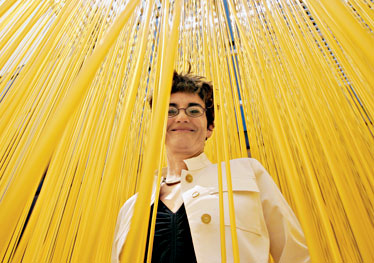Five minutes into a conversation with Mari Carmen Ramírez and you can tell she's an evangelist. She's just not the kind who preaches about God. What she wants you to know about is Gego, the German-born Venezuelan sculptor "whom we're only now beginning to rediscover," or Joaquín Torres García, the Uruguayan artist who used pre-Columbian motifs in a Modernist idiom. As Ramírez is happy to tell you, her mission is "to let the world know the richness and significance of Latin American and Latino art of the 20th century."
In 2001, Ramírez, who was born 50 years ago in Puerto Rico, was named the first director of the International Center for the Arts of the Americas, based at the Museum of Fine Arts, Houston. The most ambitious effort of its kind in the U.S., the center is dedicated not only to collecting and showing work by the Latin American avant-garde but also to supporting research and education to make plain that there is more to that art than, say, the folkloric Surrealism of Frida Kahlo or the toiling peasants of Diego Rivera.
If the standard history of modern art is like a package tour of a few familiar cities — Paris, New York, Moscow, Berlin — the Ramírez version also passes through Buenos Aires, So Paulo and Caracas, among other places. As she sees it, modern art in Latin America has been likely to have a political dimension, something that the standard academic accounts of Modernism, with their emphasis on questions of form, have had trouble taking into account. But even though Ramírez has a Ph.D. in art history from the University of Chicago, she says "my role models were never academics. I come from a tradition where intellectuals and artists are part of the public sphere, where they participate in forging public life on a daily basis." Now she doesn't just come from that tradition. She's extending it.
